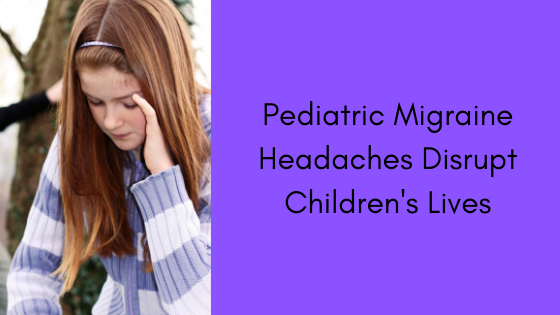Because June is Migraine and Headache Awareness Month, we would like to share some info and tips with you.
A key determining factor is that children often experience pain on both sides of the head, whereas adults usually suffer only one-sided headaches. Additionally, kids present headaches that often come accompanied by sensitivity to sound & light.
Has your child ever come home from school telling you that he or she was reprimanded for not paying attention and forced to sit through the school day even while experiencing severe symptoms?
“There are children who have what we call chronic migraine because they have a headache more than 15 days per month- more days than not,” reports Christina Szperka, M.D., Director of the Pediatric Headache Program at the Children’s Hospital of Philadelphia.
“The rates are probably around 1.5 to 2%, depending on exactly how you define that. So if you think about that, two out of every 100 children means that there are lots of teenagers out there who have very frequent headaches.”
“Sometimes the child will develop severe pain and belly pain or nausea, and then vomit, and then the episode’s over,” Szperka says.
Brief though they may be, for the afflicted children, pediatric migraine headaches are still extremely painful and disruptive of their young lives.
Pediatric Migraine Treatment
Treatment varies from patient to patient, whether adult or adolescent. There is no “one size fits all” method for creating a care plan to manage pediatric migraine headaches. This makes it extremely critical for you to join forces with a headache specialist as soon as you feel your child is indeed suffering from pediatric migraine headaches.
One thing you can do in preparation before meeting with a pediatric neurologist is to keep a diary. You obviously don’t want your child to have any more pediatric migraine headaches than needed, but if he or she does not experience one in front of the doctor, data is limited.
What should go in the diary:
- How quickly do the attacks peak for the child?
- How many of the attacks are morning migraines?
- How many attacks are already full-blown by the time you’re seeking a solution for your child?
- Is your child nauseated? When and how bad is nausea?
Pediatric Migraine Month
At this point, pediatric migraines can’t be cured. But by sharing inspiring stories from the migraine community, hosting empowering discussions, and distributing resources, the hope is to educate parents, teachers, and your community as to recognizing and properly dealing with kids who suffer from pediatric migraines.
If you feel the need for more information, we have a number of North Carolina medical centers involved in research and treatment of pediatric migraines. Check out this link for some of them.

